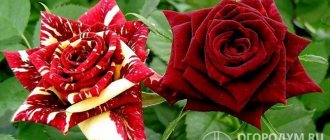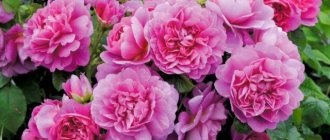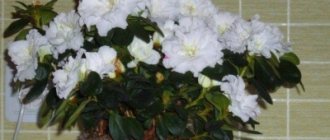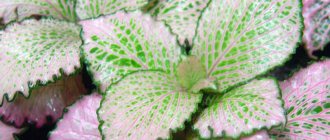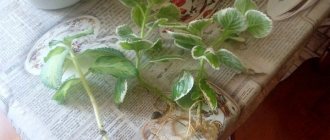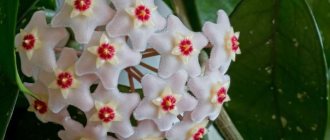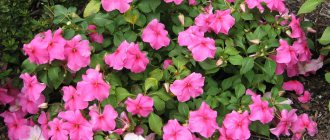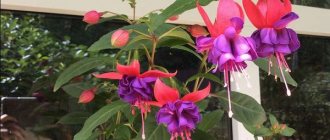As an indoor flower, soleirolia is grown all over the world due to its showy and elegant form. The beauty of Soleirolia is not flashy, but with its delicate emerald greenery it attracts all eyes. The plant looks original as a separate composition, or in addition to other, larger and more colorful specimens. Read this article about the nuances of caring for soleirolia at home.
Description
Saltirolia is a member of the Nettle family (Urticaceae), a herbaceous groundcover perennial. The genus includes a single species, Soleirolia soleirolii. Previously, the species was classified in the unapproved genus Helxine, hence the outdated synonymous name of the plant - Helksina, or Helksina.
The name was given to Soleirolia in honor of its discoverer - a French navigator, traveler and botanist of the 19th century. Joseph François Soleyrol. Among European peoples, the plant is called “children’s tears”, “tears of an angel”, “mother of thousands”, “Corsican curse”. Peculiar nicknames were given to Soleirolia for the specific shape of leaves and flowers, and the ability to grow in a short time with climbing shoots.
Under natural conditions, Saltirolia grows in the humid forests of Sardinia and Corsica, and is also found in other parts of the Mediterranean region.
The height of the plant in cultivation is up to 5 cm. The creeping stems are flexible and thin, densely branched. The diameter of the round leaves is about 5 mm. Foliage color - lush green, green-golden, lime green, grayish.
IN THE PHOTO: Original leaves of unusual colors are the most decorative part of Soleirolia.
The creamy white flowers of this evergreen perennial are small and inconspicuous. The bracts are covered with clinging, curved hairs. In the middle zone, the flowering of Soleirolia lasts from May to June.
Popular varieties
Aesthetic and popular varieties of Saltirolia in Russia are 'Aurea' ('Gold Queen') with a golden tint of green leaves and the light silvery exquisite 'Argentea' ('Silver Queen'). The decorative form 'Variegata' is decorated with a white border along the edges of the leaves.
IN THE PHOTO: “Golden Queen” of gardens and rock gardens - Soleirolia 'Aurea'.
IN THE PHOTO: Silver-green Soleirolia 'Argentea'.
Pests, diseases
| Disease/pest | Manifestations | Methods of disposal |
| Gray rot | A gray coating forms on the foliage, the shoots rot and die. | Remove the affected areas of the flower, reduce watering, and ventilate the room more often. |
| Brown rot | The stems become thinner and turn brown. | Spray with fungicides and thin out occasionally. |
| Spider mite | A thin web forms on the foliage, deformation of the leaf blades is observed, they turn yellow and dry out. | Rinse the plant in the shower and treat with any insecticide. Repeat the treatment 2-3 times. |
| Whitefly | Leaves curl, turn yellow and fall off. | Treat with Aktara. |
Growing
In open ground:
Saltirolia is grown as a green “carpet” in gardens and greenhouses. Since in nature the climbing groundcover grows in rocks and gorges, it is also appropriate in rock gardens. The rich green shoots of Soleirolia on an alpine hill will highlight the beauty of its “neighbors”, which you can read about in the article: “Plants for an alpine hill - mountain flora in your garden.” The plant will decorate a decorative garden path made of large slabs or stones or the shore of an artificial pond.
IN THE PHOTO: A variant of the laconic design of a stone garden path with Soleirolia.
Suitable soil for Saltirolia is neutral (pH 6.0–7.0) or slightly acidic (pH 5.0–6.0). It is undesirable to plant the plant where the soil dries out very much in the heat.
When planting in a garden or flower bed, it is better to choose a place in partial shade or shade for Soleirolia. Being in direct sunlight reduces the decorativeness of the leaves and can destroy the shoots. At the same time, for a healthy look, Saltirolia needs diffused bright light.
Indoors:
Saltirolia in the form of a lush green “ball” is a highly decorative hanging plant that decorates balconies and loggias. It also grows well indoors, including in “winter gardens.”
For growing perennials indoors, a tub with large plants or a spacious container is suitable. The shoots of the plant very quickly spread over the entire surface of the earthen clod and “master” it. Related to this is the need to annually transplant Soleirolia into a shallow, wide container.
The ideal soil composition for indoor or greenhouse Soleirolia is the ratio of chernozem, leaf soil and sand 1:3:1. The soil should be drained, moisture-absorbing and saturated with plant nutrients.
IN THE PHOTO: Soleirolia in a wicker pot-basket is an interesting art object for decorating a garden, patio or loggia with a sufficient level of illumination.
The optimal temperature is 15–22°C. Overheating is more dangerous for Soleirolia than decreasing temperature, especially during the period of forced dormancy (late October - February).
During active growth, in spring and summer, Saltirolia is fed with universal fertilizers for ornamental foliage plants. Specific recommendations for their use are set out in the publication: “Using fertilizers for indoor plants.”
Fertilizing stimulates the already naturally intense growth of Soleirolia greenery. Therefore, it is worth applying fertilizers in half the dose indicated by the manufacturer, once every two weeks.
Caring for indoor saltwater
Based on the natural habitat, when growing at home, you need to create similar conditions: heat and humidity. Saltirolia does not like excesses in anything; its main requirement is moderation.
Location requirements
The flower is often planted in a tub with a palm tree, ficus and other large plants - as it grows, it takes up free space and an original, beautiful composition is obtained. The main plant in such a neighborhood needs to be watered in smaller volumes, because the ground cover carpet retains moisture well.
It is not recommended to plant together with low-growing crops - helxina can crowd them out. Can be grown in separate pots of various sizes, in hanging flowerpots, terrariums, florariums. It is believed that it absorbs harmful radiation from devices, so it is placed near a computer or TV.
For growth, the crop needs fresh air - in a room where it is smoky, there are many impurities in the air, it will not grow.
Choosing a pot, soil
Any container will do for a rapidly growing ground cover, but not very deep. A drainage layer (about 2 cm) must be placed on the bottom, and the pot is placed in a convenient tray. When growing in a florarium or terrarium, a drainage layer of at least 5 cm is also required.
You can buy the soil mixture in the store - soil is suitable for decorative deciduous plants, violets, palm trees, or you can prepare it yourself - leaf soil (3 parts) + sand and black soil (1 part each). You can add a little vermiculite. The mixture is loose, moisture-absorbing, nutritious, and not sour.
The nutritional value of the soil is increased by fertilizing, which is applied at intervals of 14-16 days from spring to autumn. Fertilizers for decorative deciduous plants and growth stimulator Peat Oxide are used.
Lighting, temperature
Excess light, as well as its lack, is destructive for soleirolia. On a south window, if shading is not provided, it will die from burns, and in full shade it will look less decorative. It is better to place it where the light is diffused. If necessary, it can grow in artificial light.
The optimal temperature regime is 15-22 °C. Overheating of the soil is detrimental to the root system, so in hot weather you need to be careful about watering and shading. It is permissible to lower the temperature to +15 °C; at +8 °C the flower will die. A sharp change in temperature during through ventilation in the cold season is also destructive. In summer, the pot can be taken out onto the balcony or terrace.
Air humidity and watering requirements
In nature, soleirolia grows in the damp lands of tropical forests, in gorges, in rock crevices, where there is enough moisture, so when caring at home it is important to keep the soil moderately moist. If you allow the clod of earth to dry out completely, it is unlikely that the plant will be restored. Bottom watering is preferable - saturation with moisture occurs more slowly and evenly. To prevent the pot from standing in water during bottom watering, pebbles, small stones, and crushed bricks are poured into the tray.
The mode and volume of watering depend on the ambient temperature - in hot weather they water more often and in larger volumes than in cool weather. During the heating season, dry air is moistened with a spray bottle, bowls with water are placed next to the pot, and the plant is sprayed 1-2 times a day. If it’s cool, you can’t spray it often, so as not to provoke rotting processes.
Reproduction methods, transplantation
Transplantation is carried out when the roots fill the entire volume of the pot. This will become noticeable in the external state of the plant - the stems are limp, the leaves are small and pale. It is better to replant at the beginning of the growing season. When replanting, you can divide the bush into several parts and plant the divisions in a separate container, plant them with other plants, or create a composition from them in a large container.
Dividing a bush is one way of propagation, another way is using cuttings. They are cut in the spring from the apical part of the stem and immediately rooted in a loose substrate of peat and sand or immediately planted in a pot in a permanent place. Rooting goes well without creating a greenhouse from a bag or jar. The main thing is that the soil should always be moist. In the absence of a substrate, root in water. The bush turns out lush if several seedlings are planted in one pot.
There is usually not much space in the pot, but if space allows, it can be propagated by layering. To do this, the shoot is bent to the ground, the contact area is sprinkled with earth, and watered. When rooting occurs, the cuttings are cut off from the mother bush and planted separately.
The seed propagation method is also possible, but it is not always possible to purchase seeds. The seeds do not require preparation or soaking - they are distributed over the surface of a damp, loose substrate, moistened with a spray bottle, and covered with a film or lid. Place the container in a warm, bright place and open it regularly to ventilate and remove condensation. When shoots appear, remove the lid. Grown seedlings are planted in cups or planted immediately in a permanent place.
Reproduction
Bush division:
Saltirolia reproduces by dividing the turf - a green “carpet” formed by shoots. It is divided by hand as soon as the bushes grow. Using a knife to divide Soleirolia turf is not recommended. The divided bushes are immediately transplanted to a new place in the open ground or into containers of suitable size.
Cuttings:
Another way to propagate Saltirolia is by cuttings. Cuttings are separated during the active growing season of the plant. The lower part of the shoot is removed, leaving an oblique cut. Then the cutting is placed in a substrate whose composition is indicated above. The desired container volume for a small-leaved indoor plant is 100 ml.
After this, the cuttings are watered abundantly and kept in conditions of high humidity, at a temperature of 25°C and 12 hours of daylight until rooting. The rooted Soleirolia sprout is placed in a “permanent” container. The first fertilizing to stimulate growth is applied two weeks after transplantation.
IN THE PHOTO: Grown cuttings of indoor Soleirolia.
Superstitions and signs
Since soleirolia is a very tenacious plant, it is suitable for novice gardeners. You can also safely grow it in a house where there are pets or children, since this flower does not contain any toxic substances.
Experts say that this plant helps neutralize negativity in the house, as well as strengthen the health of its owner. It can also absorb the negative energy emitted by household appliances and refresh the atmosphere with its positive energy.
SOLEIROLIA or GELXINA - a perfect unpretentious plant | Care and breeding at home
Secrets of success
To ensure that the amount of light is sufficient for the formation of a lush and shiny “cap” of Soleirolia leaves, it is not recommended to place the plant on the north side.
Drying of leaves and stems is unsafe for indoor and outdoor Soleirolia. Therefore, you need to constantly moisten its green “carpet” manually or using automatic sprinklers for the garden.
IN THE PHOTO: Regular spraying preserves the beautiful color and turgor of Soleirolia leaves.
Saltirolia is moisture-loving, needs regular, abundant watering, but seriously suffers from stagnation of water in the soil. Excess moisture should be drained from the container with the plant.
